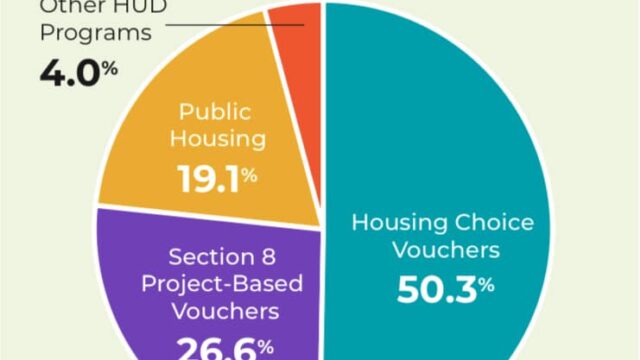Child Poverty
Child Poverty
-
-
Child Poverty
What You Need to Know About Federal Rental Assistance
Federal rental assistance is a set of several programs—mostly administered through the Department of Housing and Urban Development (HUD) and the Department of Agriculture with support from tax credits—that help families with little or no income cover their housing costs. Our new fact sheet provides a useful primer on federal rental assistance.
| National -
-
Child Poverty
What You Need to Know About Rental Assistance: A Brief Background on the Basics
Federal rental assistance is a set of several programs—mostly administered through the Department of Housing and Urban Development (HUD) and the Department of Agriculture with support from tax credits— that help families with little or no income cover their housing costs. These programs help in many different ways, but the basic concept is that families with low incomes contribute a certain, sustainable amount of their income to their monthly rent payments and the government covers the rest. In total, these programs help more than 9 million people in 4.6 million households, more than a third of which were households with children.
-
-
Child Poverty
Nearly 1 in 5 Ohio Students Were Not Graduating on Time Even Before COVID-19 Upended the Educations of Millions of Ohio Children, New Report Shows
| Ohio -
Child Health
Minnesota Ranks Third Overall for Children’s Well-Being, but Fault Lines in Systems Exacerbated by Pandemic; Black, Indigenous and Children of Color Experience Vast Disparities in Outcomes
Minnesota ranked third among states for overall child well-being, improving in health and education rankings but falling in the Family and Community domain from 2020, according to the latest edition of the national 2021 KIDS COUNT® Data Book, released today by the Annie E. Casey Foundation.
| Minnesota -
-
Child Health
2021 Legislative Session Report Card
With the conclusion of the 2021 Legislative Session, we pause to take stock of progress for New York’s children and families, celebrate our victories and assess where further advocacy is needed to level the playing field for the youngest New Yorkers.
-
Child Poverty
What You Need to Know About TANF: A Brief Background on the Basics
Temporary Assistance for Needy Families (TANF) is a federal block grant program for states, tribes, and territories designed to help families with a variety of services. States receive the block grant funding and use it to administer programs that provide cash assistance, child care, work supports and activities, child welfare, and more. States also use the funding to help families with children experiencing poverty pay for groceries, rent, diapers, clothing, and other basic necessities. In Fiscal Year 2020, which spans from October 2019 – September 2020, more than 1 million families—including more than 2 million children—received TANF assistance.


